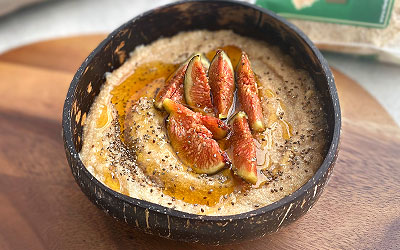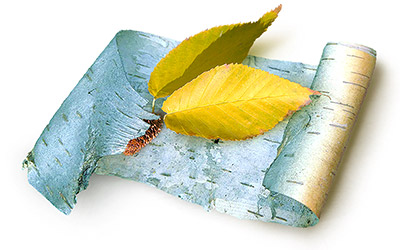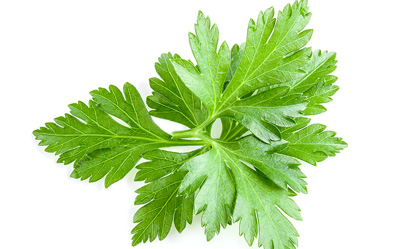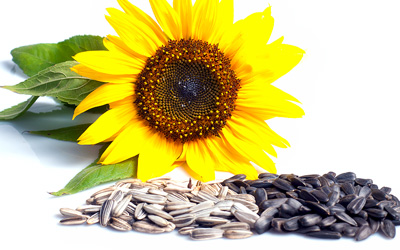Figs are fiber-rich, low-calorie fruits, which are packed with vitamins and minerals. While the great nutritional value of figs makes them a healthy snack, both fresh or dried, the medicinal properties of the leaves, fruits, and seeds of the fig tree have also been traditionally used for treating a number of health conditions.
Fig Medicinal Properties
Health Benefits of Figs
Figs are a great source of dietary fiber and, thus, a popular fruit choice for those trying to improve digestion and lose weight. While figs' health benefits are numerous, they are mainly consumed for:
Relieving constipation. The laxative and demulcent properties of figs help enhance digestion and regulate bowel movements.
Managing blood sugar levels. Figs have been shown effective for stabilizing glucose in people with diabetes.
Additionally, scientific studies suggest that figs may have beneficial effects on bone density, high blood pressure, and congested respiratory passages.
Traditionally, figs have been used to make laxative preparations to alleviate constipation. In Latin America, figs are widely used in folk remedies. A fig leaf decoction is gargled to relieve sore throat as well as a remedy for diabetes and calcification in kidneys and liver, whereas figs boiled in milk are repeatedly packed against swollen gums.
The latex of unripe figs and other parts of the fig tree are also widely applied on warts, skin ulcers and sores, as well as taken as a purgative and vermifuge, although these are not considered safe procedures because of the risk of intoxication.
How It Works
Fig leaves and fruits contain many active substances, such as phenolic compounds, mostly flavonoids, organic acids, anthocyanins, and coumarins, all of which have powerful antioxidant actions that enhance all body functions, including the immune system, warding off diseases and promoting cellular regeneration. Cyanidin-3-O-rutinoside (C3R) is the main anthocyanin found in fig fruits, contributing 92% of their total antioxidant capacity.1,2 The dark varieties are an excellent source of anthocyanidins, even better than red wine (see grape) and dark tea (see tea plant).
Often used to make laxative preparations, the fig fruit is also rich in dietary fiber, which helps alleviate constipation and aids with many other digestive problems, such as colic and dyspepsia.3
Fig leaves, on the other hand, are good for treating loss of appetite and diarrhea, as well as diabetes and skin problems. In scientific studies, fig leaf extract has been shown not only to increase insulin production, but also to influence fat metabolism, thus helping to stabilize blood sugar levels and aiding with weight loss.4,5
Figs also contain 50% dextrose - a type of naturally-occurring sugar critical to cellular respiration and glucose metabolism and, therefore, for energy and the overall function of the body.
Figs are considered a superfood for immunity, while the leaves are widely used by diabetic patients to help stabilize blood sugar levels.3
Laxative properties can be found in other herbs, such as prune, senna, and tamarind, whereas lucuma, rhubarb, and yacon also help regulate blood sugar levels.
Fig Side Effects
The latex of unripe fig fruits and other parts of the fig tree may be severely irritating to the skin if not removed promptly. It is an occupational hazard not only to fig harvesters and packers, but also to workers in food industries and those who employ the latex to treat skin diseases.
- Medicinal action Hypoglycemic, Laxative
- Key constituents Flavonoids, organic acids, anthocyanins, coumarins, and dextrose
- Ways to use Capsules, Decoctions, Hot infusions/tisanes, Liquid extracts, Food, Powder, Syrup, Essential oil, Dried
- Medicinal rating (2) Minorly useful plant
- Safety ranking Safe

Fig Nutrition
The nutritional value of figs lies in their high levels of healthy sugars (mainly dextrose) as well as in their substantial levels of minerals, vitamins, and dietary fiber.
Dried figs are lower in soluble vitamins, like the B group, but still provide good amounts of minerals and fiber, both of which help with digestive health, as well as with bone density and glucose metabolism.
While figs contain most essential nutrients in small amounts, they provide adequate levels of minerals, such as potassium, which is an important mineral that helps lower high blood pressure; copper, essential for red blood cells production and strong bones; and manganese, a vital nutrient for the regeneration of connective tissue and bones, as well as for fat and carbohydrate metabolism, calcium absorption, and blood sugar regulation.
The well-known metabolic and digestive benefits of figs are mainly attributed to their dietary fiber content, which helps lower cholesterol and glucose levels, as well as promotes digestion and regular bowel movements, thus helping relieve constipation.
Figs also provide all B vitamins, mainly B1 (thiamin), B5 (pantothenic acid), and B6 (pyridoxine), all of which help the body convert carbohydrates into glucose, which is used to produce energy. They also help with fats and protein metabolism. B vitamins are needed for a healthy liver, skin, hair, and eyes, as well as for the nervous system and brain function.
Raw fig fruit also provides smaller amounts of iron, zinc, phosphorus, vitamin C, and vitamin A (as beta carotene), along with many other important nutrients.
With only 74 calories, 100 grams of fresh figs provide 6% and 12% of the recommended daily value for carbohydrates and dietary fiber.
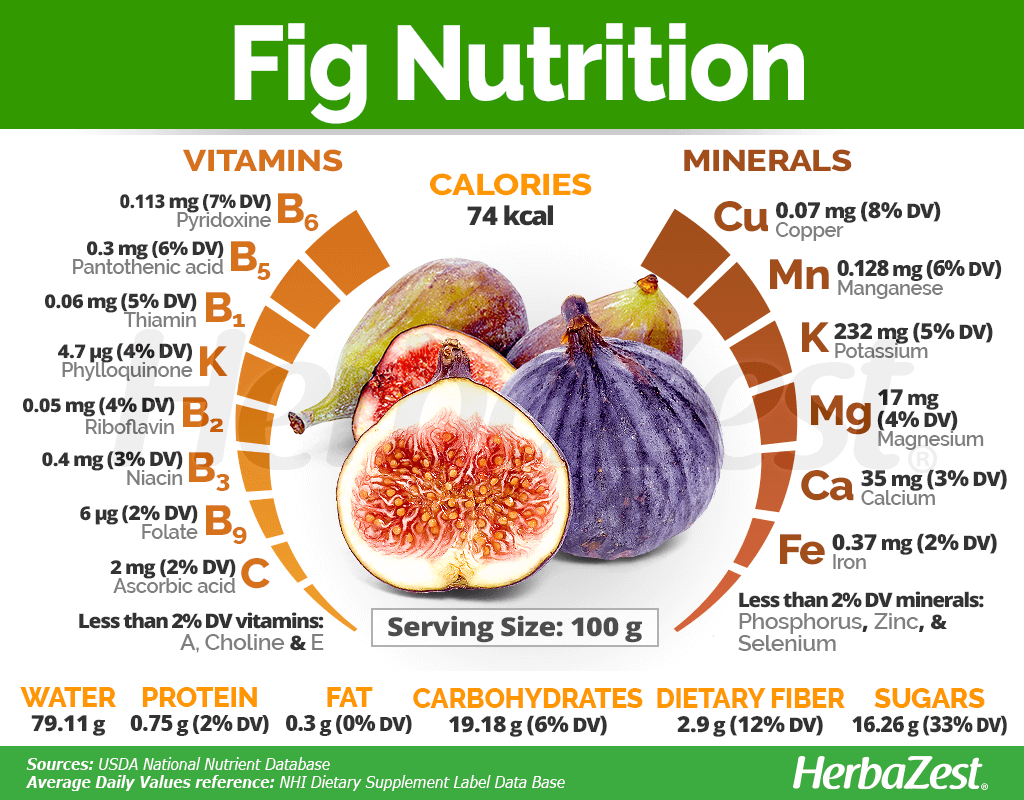
How to Consume Fig
Figs are most commonly eaten whole and fresh. They are also highly popular in dried form. Figs are also used to adorn desserts and preserved to make jellies and jams.
Natural Forms
Raw. The benefits of figs are fully obtained in their natural form, freshly picked from the tree. Many prefer to peel the fig fruit before eating; however, the peel of dark fig varieties is rich in anthocyanidins, which have great antioxidant power.
Dried. Figs loose part of their water content when they are dried; however, they retain their mineral content and dietary fiber. Dried figs have a longer shelf life and can be consumed year-round, alone, mixed with nuts and other dried fruits, or as an ingredient in baked goods.
Powder. Once dried and powdered, most benefits of figs are preserved. Fig powder is not only a good source of nutrition, with longer shelf life than any other fig product, but it is also commonly consumed as a natural laxative due to its high amount of dietary fiber.
Infusion. The dried shoots, leaves, and branches of the fig tree can be steeped into an herbal infusion, which is commonly used for treating hyperglycemia, as well as gastrointestinal and respiratory illnesses.
Jam. This is a popular preparation and a great way to preserve figs and enjoy them through the year. However, it is recommendable to keep it low in sugar content.
Paste. In paste form, figs are commonly consumed to relieve constipation, but also as a sweet filling for pastries.
Syrup. In this concentrated form, figs can be used as a natural sweetener, which can replace sucrose, corn syrup, and artificial sweeteners.
Herbal Remedies & Supplements
Capsules. People with diabetes find taking fig as a supplement particularly useful, particularly in capsules that carry a fixed daily dose.
Extract. In this form, figs can help improve insulin production and glucose levels.
Oil. The demulcent properties of figs are potentiated in oil form, which is highly valued for its anti-aging and moisturizing benefits when applied topically to skin and hair.
- Edible parts Fruit
- Taste Sweet
Growing
The fig tree is most commonly cultivated in mild-temperate climates. However, it can also be grown in tropical and subtropical areas.
Growing Guidelines
- The fig tree grows best in sunny locations that don't get hit with strong winter winds or excessive rainfall.
The fig plant can be grown on a wide range of soils as long as there is sufficient depth and good drainage.
Figs should be planted at least eight inches deep (20 cm), preferably in late winter or early spring; container-grown plants can be planted any time of the year in warm climates.
Figs can be raised from seed; however, the fig plant is usually propagated by cuttings.
The fig tree needs to be watered regularly but in moderation, since it will not tolerate excessively wet soil.
Fig trees are prone to attacks by root-knot nematodes, as well as by borers, mealybugs, and scale insects.
The fig tree can also be affected by fungal diseases and viruses.
Detailed information about growing figs can be found in the herb garden.
- Life cycle Perennial
- Harvested parts Leaves, Shoot, Fruit
- Light requirements Full sun
- Soil Well-drained
- Growing habitat Temperate climates, Mediterranean regions, Subtropical regions
- USDA Plant Hardiness Zones 6a, 6b, 7a, 7b, 8a, 8b, 9a, 9b, 10a, 10b, 11a, 11b
- Planting time Early spring
- Plant spacing average 2 m (6.56 ft)
- Propagation techniques Cuttings
- Potential insect pests Beetles, Insects, Nematodes, Scale insects, Mealybugs
- Potential diseases Fungi, Root rot, Viruses
- Potential animal pests Birds
Additional Information
Plant Biology
The fig is known as a false fruit or multiple fruit, because its inside is composed by unborn flowers and seeds.
The fig tree can reach 10 - 30 feet (3 - 9 m) high tall, and it is characterized by large, fragrant, green ornamental leaves. It has numerous spreading branches and a trunk rarely more than seven inches (18 cm) in diameter. The trunk and stalks are rich in a milky latex-like substance. The fig fruit can be egg-shaped, conical, or pear-shaped, one to four inches (3 - 10 cm) long, and its thin and tender skin varies in color from yellowish-green to coppery, bronze, or dark-purple. Figs are filled with specialized structures called "syconia," which bear minute male and female flowers on the inside. The flesh can be whitish, pale-yellow, amber, more or less pink, rose, red, or purple.
Figs are juicy and sweet when ripe and gummy with latex when unripe.
Classification
Botanically identified as Ficus carica, the fig tree belongs to the Mulberry family (Moraceae), which encompasses over 1400 species classified into about 40 genera. With more than 800 species, mostly shrubs and trees, the Ficus genus is the largest of all plant genera, with Ficus carica being its most economically important species.
Subspecies, varieties, and cultivars of fig
So far, there is only one identified subspecies of Ficus carica, known as F. carica subsp. rupestris, or Iranian mountain fig. The common fig, however, does have several different varieties, including F. carica var. afghanica, F. carica var. caprificus, F. carica var. domestica, and F. carica var. globosa. Finally, there are over 50 established fig cultivars around the world, with 'Adriatic,' 'Black Mission,' and 'Brown Turkey' being the most popular ones in North America
Historical Information
Remnants of figs have been found in excavations of Neolithic sites, traced to at least 5,000 BCE. It is believed that figs are native to western Asia and were distributed by human immigration and commerce throughout the Mediterranean area. They have been cultivated in a vast territory, from Afghanistan to southern Germany, and the Canary Islands. Introduced into England during the 14th century, European cultivars were taken to China, Japan, India, South Africa and Australia.
Economic Data
Since fig trees produce fruits 10 months of the year, they are a highly profitable crop. Turkey and Egypt are the top fig-producing countries, with 305,689 and 177, 135 tonnes each only in 2017. In Europe, western Asia, northern Africa, and the United States (particularly California), commercial canning and drying of figs are industries of great importance.
Other Uses
Perfume and cosmetics. In southern France, fig leaves are used to make perfume, whereas fig seed oil is used as a lubricant agent in skincare products.
Fodder. In India, fig leaves are plucked after the fruit harvest and used for cattle feeding.
Industrial uses. Fig latex is collected, dried, and powdered for use in coagulating milk to make cheese and junket, a dessert made from flavored milk and rennet. A protein-digesting enzyme in fig's latex, called ficin, is used for tenderizing meat, rendering fat, and clarifying beverages.
In Mediterranean countries, low-grade figs are converted into alcohol and used as a flavoring for liqueurs and tobacco.
- Other uses Alcohol, Animal feed, Cosmetics, Perfume
Sources
- Diabetes Research and Clinical Practice, Hypoglycemic action of an oral fig-leaf decoction in type-I diabetic patients
- Fruits of Warm Climates, Fig
- Laboratory Animal Research, Effects of Ficus carica paste on constipation induced by a high-protein feed and movement restriction in beagles, 2011
- Pharmaceutical Biology, Protective effects of Ficus carica leaves on glucose and lipids levels, carbohydrate metabolism enzymes and β-cells in type 2 diabetic rats, 2017
- Purdue University, Fig, Ficus carica
- Texas A&M Agrilife Extension, Figs
- FAOSTAT, Top 10 Country Production of Figs
- USDA Nutrient Database, Full Report (All Nutrients): 09089, Figs, raw | Full Report (All Nutrients): 09094, Figs, dried, uncooked
- The Herb Book, p. 192
- Journal of Agricultural and Food Chemistry, Antioxidant activities and anthocyanin content of fresh fruits of common fig (Ficus carica L.)
- Evidence-based Complementary and Alternative Medicine, Ficus carica L. (Moraceae): Phytochemistry, Traditional Uses and Biological Activities, 2013
Footnotes:
- Natural Product Research. (2012). Anti-inflammatory and antioxidant activity of Ficus carica Linn. leaves. Retrieved November 15, 2021, from: https://pubmed.ncbi.nlm.nih.gov/21644169/
- Herba Polonica. (2019). Evaluation of phytochemical constituents and antioxidant potential of hydro-alcoholic and aqueous extracts of Murraya koenigii L. and Ficus carica L. Retrieved November 15, 2021, from: https://pubag.nal.usda.gov/catalog/6877286
- The FASEB Journal. (2010). The Effects of Ficus Carica on Functional Constipation. Retrieved Novembers 15, 2021, from: https://faseb.onlinelibrary.wiley.com/doi/abs/10.1096/fasebj.24.1_supplement.lb348
- Diabetes Research and Clinical Practice. (1998). Hypoglycemic action of an oral fig-leaf decoction in type-I diabetic patients. Retrieved November 15, 2021, from: https://pubmed.ncbi.nlm.nih.gov/9597370/
- Pharmaceutical Bioloy (2017). Protective effects of Ficus carica leaves on glucose and lipids levels, carbohydrate metabolism enzymes and β-cells in type 2 diabetic rats. Retrieved November 15, 2021, from: https://www.ncbi.nlm.nih.gov/pmc/articles/PMC6130661/


